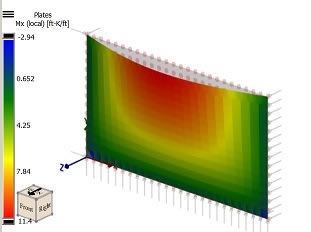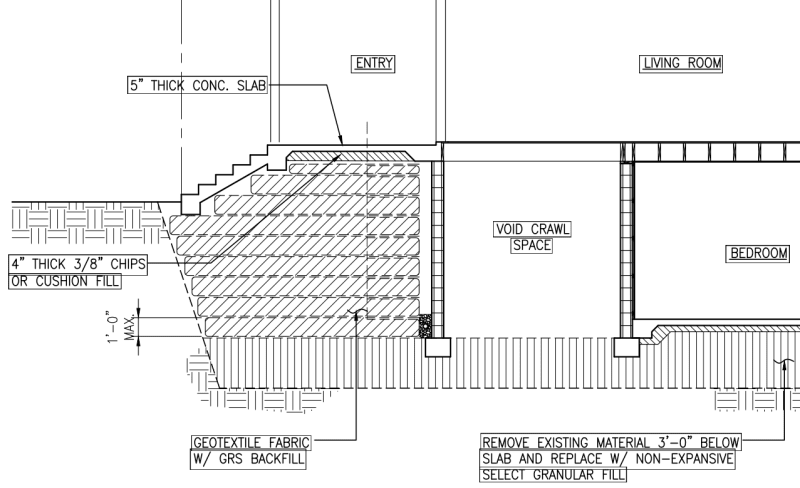I have been asked to assist with the structural engineering on a behemoth custom home with some unusual features, including a basement "sport court" with a 12' tall ceiling...wait for it...underneath the garage. The attached PDF shows the sections and the floor plan at this location. (The garage floor is typical precast plank with a 4" concrete topping, 25' clear span). I was legitimately concerned about the extreme depth of this foundation wall...unheard of in typical residential construction, so I hired a local geotechnical engineer that I trust to perform a site visit, and sample and probe the open excavation that was started. The material includes shale and weathered bedrock, which helps immensely with the soil bearing capacity. I am modeling the foundation walls with RetainPro software. I am confident that I can adequately design the walls for the axial loads and lateral earth pressures. I will call for backfilling with clean sand immediately behind the walls to keep the at-rest heel pressure manageable. Perimeter walls will be tiled along the footing. My preliminary wall model requires 14" thick walls with #6 vertical rebar @ 12" o.c. at each face. But the wall I am concerned about is at the stairwell. Unlike the rest of the garage floor area, that wall is unsupported at the top, due to the stair case, and will need to be modeled as a cantilevered wall. For this I am modeling it as a tapered cantilever wall in RetainPro. Looks like it will work but the base of wall might be 24" thick, and the footing ~48" wide. I wonder if there are other stabilization methods, such as soil anchors, that may be more appropriate for this situation.
I'm curious if other professionals have encountered a situation similar to this and if there is any advice or recommendations I may not have considered. I have assisted this custom home builder many times and believe his concrete sub does quality work. This house is 8,700 square feet, so I think we're talking ~$3M construction cost...he probably hires a top-quality mason. But to avoid a potential catastrophic foundation failure I wonder if it is appropriate to suggest the stairs be eliminated there. Any advice is appreciated.
I'm curious if other professionals have encountered a situation similar to this and if there is any advice or recommendations I may not have considered. I have assisted this custom home builder many times and believe his concrete sub does quality work. This house is 8,700 square feet, so I think we're talking ~$3M construction cost...he probably hires a top-quality mason. But to avoid a potential catastrophic foundation failure I wonder if it is appropriate to suggest the stairs be eliminated there. Any advice is appreciated.


